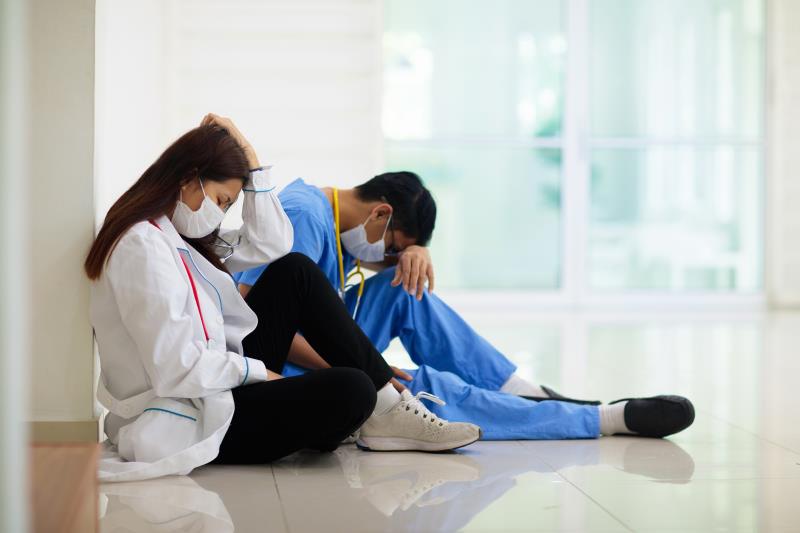COVID-19 frontline healthcare workers at risk of burnout





Frontline healthcare workers (HCWs) directly dealing with COVID-19 patients may be at risk of burnout, according to a single-centre study from Japan.
Between April 6 and 19, 2020, the researchers surveyed 312 HCWs (physicians, nurses, laboratory medical technologists [MTs], radiological technologists, and pharmacists; median age 30.5 years, 71.5 percent female) who were working in departments at St Luke’s International Hospital, Tokyo, Japan, which had direct contact with COVID-19 patients.
Burnout was assessed using the Japanese version of the 16-item Maslach Burnout Inventory–General Survey, which comprises the three major aspects of burnout – emotional exhaustion, cynicism or depersonalization, and professional efficacy. In this study, burnout was defined as a high level of exhaustion (>3.5) combined with either high cynicism (>3.5) or low professional efficacy (<2.5). Overall burnout prevalence was 31.4 percent.
The population was primarily composed of nurses (40.4 percent) followed by physicians (26.3 percent). They worked for a median 61 hours per week and had a median 3 days of contact per week with COVID-19 patients.
Compared with physicians, the prevalence of burnout was increased in all other HCWs (nurses: adjusted odds ratio [OR], 4.9, 95 percent confidence interval [CI], 2.2–11.2; p=0.001; laboratory MTs: OR, 6.1, 95 percent CI, 2.0–18.5; p=0.002; radiological technologists: OR, 16.4, 95 percent CI, 4.3–61.6; p=0.001; pharmacists: OR, 4.9, 95 percent CI, 1.3–19.2; p=0.02).
Increased prevalence of burnout was also noted among HCWs with fewer years of experience (OR, 0.93, 95 percent CI, 0.89–0.97; p=0.001) and those with anxiety due to unfamiliarity with personal protective equipment (OR, 2.8, 95 percent CI, 1.4–5.5; p=0.002).
Burnout prevalence was also elevated among those with less sleep compared with the prepandemic period (OR, 2.0, 95 percent CI, 1.1–3.6; p=0.03), as well as those who needed social support such as a reduced workload (OR, 3.6, 95 percent CI, 1.6–8.0; p=0.002) and expectations of appreciation or respect (OR, 2.2, 95 percent CI, 1.1–4.6; p=0.03).
The latter suggests that expression of appreciation by team leaders and peers “through positive messages of gratitude and support” is paramount, said the researchers.
They acknowledged that the single-centre study prevents the applicability of the findings to other institutions or countries. Prevalence of burnout prepandemic was also not assessed; as such, it was not possible to identify the change in prevalence.
Previous studies have noted the presence of burnout among HCWs on the frontline of the COVID-19 pandemic. [EClinicalMedicine 2020;24:100424; medRxiv 2020;doi:10.1101/2020.06.12.20129650]
“[T]he problem of burnout … overlaps with the symptoms of depression,” said the researchers of the present study. “Further studies focusing on both identification and interventions for frontline HCWs to prevent and reduce risk of burnout are needed,” they said.